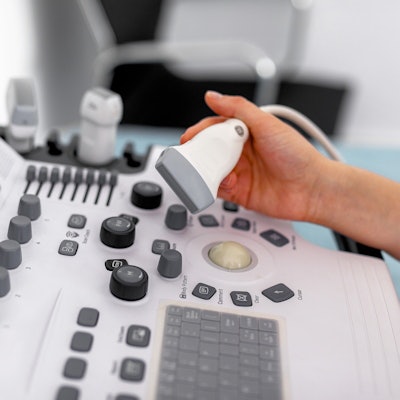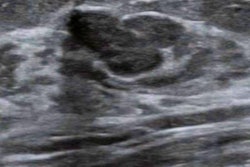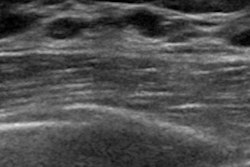
An artificial intelligence (AI) model using breast ultrasound images is on par with human experts when it comes to assessing BI-RADS 4 lesions, a study published April 22 in Academic Radiology has found.
A research team led by Yuqun Wang from Shanghai Jiao Tong University School of Medicine found that their model, which uses both grayscale and contrast-enhanced ultrasound (CEUS) images, has high sensitivity, specificity, and accuracy marks when evaluating these breast lesions.
"Our proposed multiregional deep learning model had a diagnostic performance comparable to that of ultrasound experts, showing the potential to be clinically useful in minimizing the number of false-positive biopsies," Wang and co-authors wrote.
Tissue sampling is recommended for BI-RADS 4 breast lesions, as making an accurate determination of malignancy is important for preventing false-positive biopsies. Previous research suggests that CEUS has advantages in diagnostic performance over conventional ultrasound by assessing blood perfusion in breast lesions.
But CEUS is limited by poor interobserver agreement, intensive labor, and time consumption. The investigators suggested that radiomics and deep learning could mitigate these limitations by extracting high-throughput quantitative imaging features -- and "learn" additional features from raw data.
Wang and colleagues created a deep-learning method that incorporates multiple breast regions based on CEUS and grayscale ultrasound. They sought to determine whether using the method could lead to a reduction in false-positive biopsies and to compare its diagnostic performance with that of human ultrasound experts.
To do this, the group conducted a study that enrolled 161 women who underwent screening mammography between 2018 to 2021 and collected data from a total of 163 BI-RADS 4 lesions. The women had ultrasound imaging as well before surgery or biopsy.
Overall, the researchers found that the model's performance and that of the human experts' was comparable. The model did correctly identify more BI-RADS 4A lesions as benign (identifying 93.6% of such lesions as compared to 84.5%) compared with the experts, but this result wasn't statistically significant.
| Comparison between deep-learning model, ultrasound experts | ||
| Measure | Experts | Model |
| Area under the curve | 0.869 | 0.910 |
| Sensitivity | 89.4% | 91.5% |
| Specificity | 84.5% | 90.5% |
| Accuracy | 85.9% | 90.8% |
The study authors suggested that based on their results, the model could provide radiologists with a second opinion -- which could reduce unnecessary biopsies and serve as a training tool to help trainees gain more diagnostic confidence. They added that external, prospective validation studies with larger study populations are needed for stronger generalizability.
"Our work is unprecedented in employing a deep learning network on multiple regions of grayscale ultrasound and CEUS images for reducing false positives in BI-RADS category 4 lesions, which is a preliminary exploration of artificial intelligence using the tumor microenvironment, to classify breast lesions," the authors concluded.



















